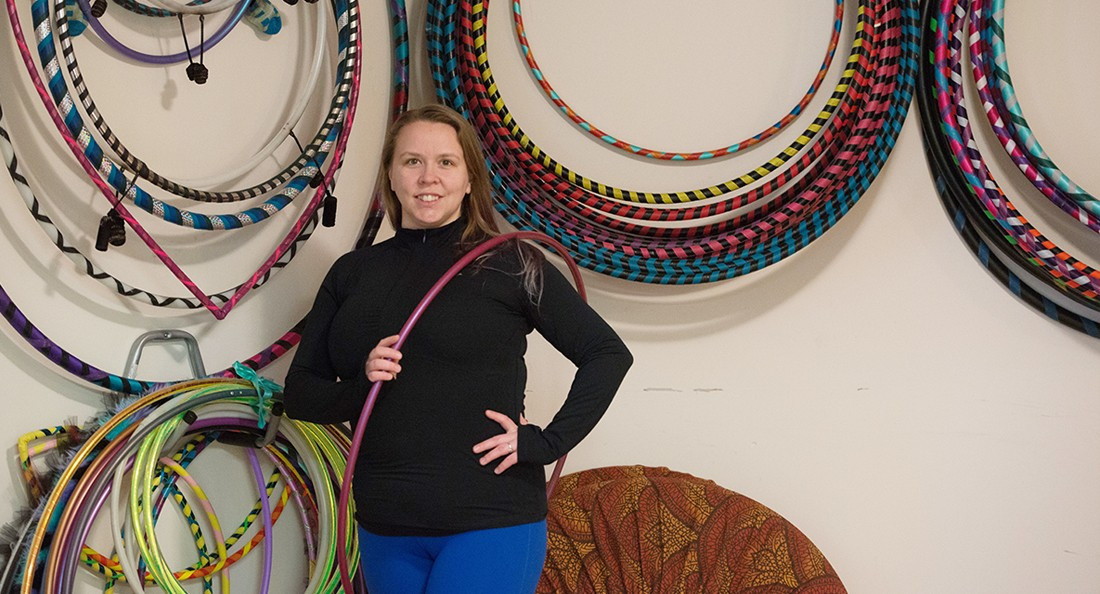Hula Hooping culture picks up momentum
Hooping is challenging, fun and making a comeback
Although first popularized in the ’60s, hula hooping has made a comeback in the 21st century as a popular form of both fitness and dance. Regardless of the purpose, hoopers agree on one thing: it’s fun!
“If you’re not smiling, you’re doing it wrong,” Karrie Blackburn, founder of Kurrent Motion Hoops, says.
Blackburn starting hooping about eight years ago. It became a journey of personal betterment.
Selina Hays, a hula hooper, explains that some people choose to just learn a few simple moves, whereas others continue to challenge themselves.
“The thing I like most about hooping is that I can express myself in a way I never could before,” Hays says.
Hoop materials range from basic plastic to a blacklight-activated material. More expensive hoops contain strips of LED. Hays explains that lights add a different dimension to the dance, since the movement creates trails and patterns.
Tech hula hooping, which refers to taking the hoop off the body and creating illusions, is particularly conducive to public performances. Hays explains that the tricks have a type of a circus appeal to them.
Blackburn says she often finds her own rhythm when hooping without music, but that music inspires movement.
“The hoop, by design, is infinite, and you’re only limited by your imagination,” she says. “It’s like writing your own music as you’re moving with the hoop.”
Hays explains that hoopers often talk about the concept of “finding your flow.”
“A hooper who has their ‘flow’ will move fluidly ... to the rhythm of a song. They transition smoothly from one trick to another and add their own unique flair to their moves,” she says. It takes time and practice, and Hays suggests learning transition moves and practicing on both right and left sides.
Hays explains that the dance style changes depending on the context. In private, a person might practice a difficult move, or else just dance for fun.
“One thing that is unavoidable in the public is eyes will be on you,” she says. She explains that people are fascinated by the flashing, rotating colours and tend to be amazed, regardless of skill level.
Although many hoopers don’t have the room to practice indoors, the outdoors is a good place in the warmer months of the year. In the winter, hoopers can take classes or participate in a “hoop jam,” where hoopers gather to practice.
“Classes provide people with learning opportunities, but also the chance to set aside a time and place to practice,” Blackburn says.
Hays was introduced to the art form at the Winnipeg Folk Festival and received a warm welcome into the community.
“Generally, if you see a person walking down the street with a hula hoop, they’re just a friend you haven’t met yet,” Blackburn says.
Overall, she says that the most important thing is to have the right attitude and a good hula hoop.
A few options to check out hula hooping around the city include the Winnipeg Circus Club, classes at Kurrent Motion and Hoop Flow Night and the drop-in hoop jams with Kurrent Motion.
Published in Volume 72, Number 15 of The Uniter (January 25, 2018)






